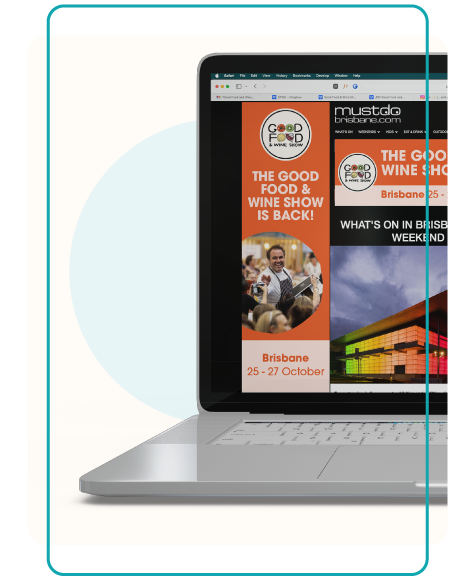Marketing is one speciality that has seen astronomical changes over the decades. Where marketers in the 1980s were confined exclusively to traditional marketing channels, marketers of the modern day have the entire World Wide Web at their fingertips, with more data than an 80s marketer could poke a Rubik’s Cube at.
In this new marketing era, where digital platforms now account for 72.7 per cent of worldwide ad investment, have traditional channels lost their impact or is there still space for the media veterans?


what is traditional?
Traditional advertising refers to any marketing done using offline channels.
This includes:
- TV and Radio
- Print Media (like newspaper and magazines)
- Billboards
- Direct Mail, Flyers and Brochures
- Face-to-Face Sales and Cold Calls
These channels aim to reach customers in physical environments, often where they’re most receptive to messaging. Think: Bunnings ads during The Block or a billboard for BMW on the freeway. These formats are great for mass awareness, but they don’t offer the same level of targeting or real-time feedback as digital methods.
Still, what they lack in data, they often make up for in trust, recall and emotional impact.
what is digital?
Digital advertising is activity that takes place online. This includes:
- Programmatic and Display Ads
- Social Media Ads
- Email Marketing
- Search Engine Marketing (SEM)
- Influencer Marketing
- Advertising on digital platforms like Spotify or Amazon Prime
Essentially, anytime you’re scrolling through, listening to, or watching something online, and you come across an advertisement – that’s digital marketing.


why does digital dominate?
No matter your industry, one thing’s certain: your audience is online. With 97.1% of Australians using the internet and 77.9% actively engaging on social media, businesses that invest in digital marketing are positioning themselves where their customers are present.
Digital channels are a data goldmine. They give marketers access to an unparalleled volume of information. Whether it’s age, gender, interests, or browsing behaviour, campaigns can be tailored with precision. They maximise relevance, efficiency and ROI. Plus, digital marketing provides real-time performance insights. You can launch a campaign in the morning and start optimising the next day.
In short: it’s measurable, adaptable and results-driven – everything a modern business wants from their marketing spend.
is tradition relevant in 2025?
With digital pulling so much weight, it might seem like traditional channels have had their day. We’d respectfully disagree.
Despite limitations such as higher costs (depending on the channel) and fewer performance metrics, traditional advertising remains a viable option. We’d even argue essential for building brand awareness.
The data tells the story too. OOH (out-of-home) ad spend is forecast to rise to US$852.20m in 2025, driven (somewhat ironically) by digital billboards and sporting venue placements. Meanwhile, TV advertising still commands significant attention in 2025, with 13 million daily viewers and 92% of Australians tuning in at least once a month.
There is still a lot to be said for the power of traditional advertising when it comes to brand marketing. Traditional ads often seeing lower ad fatigue, higher trust, and better recall than their digital counterparts and their longstanding place in society brings a level of authority and tangibility that digital can struggle to replicate.


which is better traditional or digital?
The answer is: both
The ideal marketing or advertising mix looks different for every business.
When developing a brindle strategy, we will examine your long- and short-term goals, ideal audience, and their behaviour, as well as your budget to craft a solution tailored to your brand.
We call this the omnichannel approach.
what is the omnichannel approach?
Today’s consumers are savvy – they’re researching and browsing online, but they’re also mobile, out in the world observing and absorbing. So, if your audience is everywhere, your brand should be too.
Omnichannel marketing is the strategic blending of traditional marketing and digital marketing channels to create a seamless, connected experience across every stage of the customer journey. It’s about leveraging multiple platforms with a consistent message – so whether someone sees your billboard, scrolls past your Instagram ad, or clicks on an email, they’re receiving a unified brand communication.
One example of omnichannel marketing in action? Living Interiors. When we worked with the high-end furniture retailer last year, we combined digital ads, outdoor media, premium print placements and social campaigns to support their showroom relaunch. The result? Over 2.6 million people reached, a huge uplift in engagement, and a significant increase in revenue, for MUCH less than you’d think in ad spend.
The key to omnichannel success lies in tailoring your mix to your audience, budget and goals – and making sure every channel is working together, not in silos. When done right, it’s the best of both worlds: measurable, memorable and seriously effective.


final thoughts
While digital may dominate today’s media landscape, traditional advertising still holds strong, particularly in driving brand credibility, awareness and trust. Rather than viewing them as competitors or singular options, businesses should see traditional and digital as complementary forces.
If you want to future-proof your marketing strategy, consider how you can integrate the best of both worlds. Not sure where to start? At brindle, we specialise in creating customised, omnichannel campaigns that meet your audience where they are – and move them to act.
Want to learn more about how we can help? Get in touch.